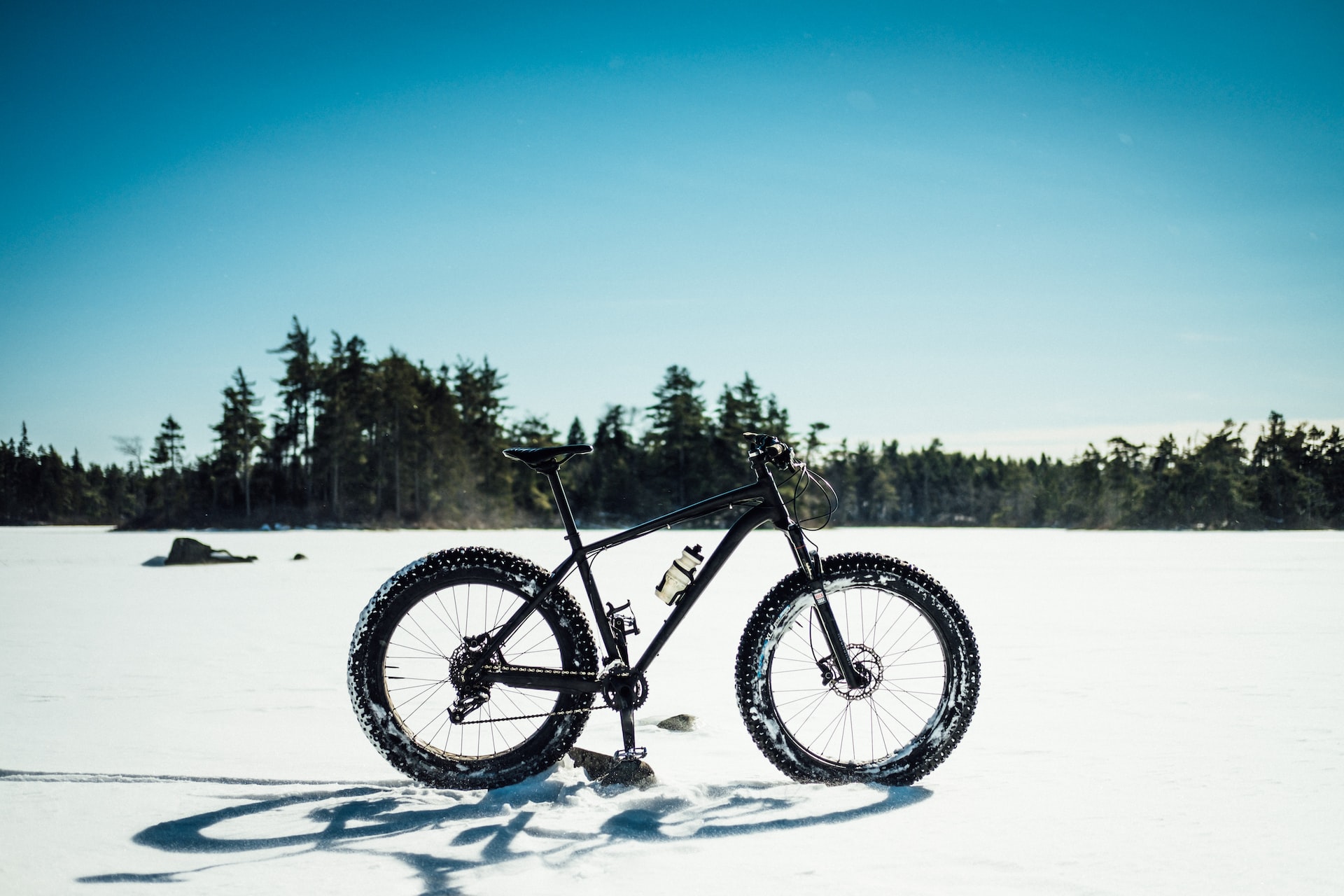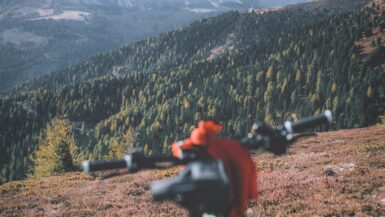Mountain biking is an incredibly immersive and exciting sport that allows you to explore beautiful landscapes, breathe fresh air, and uniquely challenge yourself. Whether a novice or an experienced biking enthusiast, learning how to ride a mountain bike on different terrain types is essential for a safe and enjoyable outing. From rocky trails to sandy beaches, the landscape for mountain biking is varied and unpredictable. This article will discuss the techniques and tips for successful mountain biking on different terrain types, including rocky, grassy, and sandy paths. With the proper knowledge and preparation, you can confidently approach any terrain and make the most of your mountain biking adventure.
Safety Considerations
Mountain biking, especially on different terrain types, requires various skills. Understanding your skill level when taking on a new terrain type is essential to ensure your safety. Take the time to practice your skills on trails with a similar grade level to get comfortable with your bike and the terrain before attempting more demanding slopes.
Inspect the Bike and Gear
Make sure your mountain bike is in good working order, and all your gear is in good condition before attempting a new terrain type. Check tire pressure, brakes, handlebar settings, and the motion of the suspension, as well as your helmet, shoes, and other protective gear.
Research the Area
Look into the geography, wildlife, and other aspects of the region where you will be mountain biking. Understand the legal trials and land usage regulations, and be aware of any potential risks or hazards. Be sure to tell someone where you are mountain biking and when you plan to return.
Prepare for the Elements
Weather, temperature, and other environmental factors can significantly affect the difficulty and safety of mountain biking. Always carry the proper gear and clothing to be prepared for the elements. Pack plenty of water and food to sustain energy, and never forget a first aid kit.
Avoid Rookie Mistakes
It is essential to be mindful of your ability level and avoid taking on too tricky terrain. Do not overestimate your skill and agility; never attempt a jump or trick until you can complete it safely. Take your time and patience when learning to ride on different terrain types.
Types of Terrain
Mountain biking offers various terrain options, each with unique challenges and rewards. Riding a mountain bike on different terrain types requires practice and experience. From steep hills and rocky descents to muddy bogs and tight singletrack, understanding the other trails and how to ride them is key to staying safe and having a great time.
Off-Road Trails
Off-road trails are a great way to explore your local area. They offer easy access to terrain ranging from rolling hills and moderate climbs to technical singletrack and steep descents. When riding off-road trails, be aware of your surroundings and avoid obstacles. Be prepared for sudden changes in terrain and pay close attention to the trail.
Mud and Bogs
Mud and bogs can be tricky terrain to navigate on a mountain bike. They require a good understanding of balance, momentum, and traction. When riding in mud and bogs, keep your speed down. Choose a line that is clear of obstacles and take it slow, using the correct technique to navigate loose terrain.
Rocky Trails
Rocky trails can be some of the most challenging terrains for mountain bikers. They require excellent technical skills and the ability to read the landscape. When tackling rocky trails, take it slow and focus on maintaining your balance and momentum. Learn how to pick the optimal line, shift your weight and use the correct braking technique to ensure a successful and safe ride.
Uphill Riding
Uphill riding is a great way to improve your mountain biking skills. It requires patience, pacing, and the ability to read the terrain and adjust your technique. When climbing uphill, shift your weight back, use a low gear and keep your speed consistent. Focus on stamina and choose the most efficient line possible to conserve energy and make climbing easier.
Downhill Riding
Downhill riding is one of the most thrilling rides a mountain biker can experience. Riding downhill requires a good understanding of speed control and reading the terrain. When descending, stay loose and keep your weight centered. Use the correct braking technique, adjust your line to avoid obstacles, and be prepared for any surprise turns the trail may present.
Technique for Uphill Riding
Hitting the trails on a mountain bike can be a refreshing experience, especially when you tackle challenging terrain types. Climbing hills on a mountain bike can be especially rewarding and present a unique set of challenges that can be both exhilarating and a bit daunting. But with the proper technique, you’ll be confidently conquering hills in no time.
Body Position and Pedal Power
Keep your body position forward and low over the handlebars when riding uphill. This helps lower your center of gravity, essential for maintaining balance. As you make your way up the hill, keep your pedal strokes short and explosive; this will help you maintain the correct momentum. Additionally, ensure to stay seated as much as possible and don’t stand up when going uphill, as this will throw off your balance and make it harder for you to reach the top.
Gear Selection
When riding uphill, you want to select the gear that will allow you to maintain the correct momentum. Generally, you’ll want to find a gear that will enable you to pedal in a low cadence but provide enough power to make it up the hill. This will help you maintain your balance and give you the energy needed to climb the mountain.
Keep Looking Up
When riding uphill, getting fixated on the ground in front of you can be easy. However, it’s essential to keep looking at the terrain ahead. This will give you the time to anticipate any potential obstacles that may present themselves and also allow you to gauge how long the climb will be.
Walk if Necessary
If you find yourself at a point where the climb is just too steep, or you’re feeling fatigued, it’s ok to get off and walk. Walking up the hill can be a great way to conserve energy and provide a few rest moments.
You’ll confidently conquer hills using the correct technique and following these tips. With the proper methods and mindset, you’ll soon be a master of uphill mountain biking. So, grab your mountain bike, head to the trails, and get ready to enjoy the ride.
Technique for Downhill Riding
Mountain biking on downhill terrain can be an exhilarating experience, but it can also be intimidating for first-timers. Before taking on a long, fast downhill section, it’s important to learn the proper technique for descending. Here are some essential tips for downhill mountain biking that will help you stay safe and have an enjoyable time.
Find Your Balance Point
The most critical skill for downhill mountain biking is finding and maintaining your balance. This can be done by finding your ideal balance point when your body is in the most stable position while in motion. To see this point, stand over the bike in an athletic place with your weight evenly distributed on both feet. Remain in this position as you pedal, and then adjust your weight as you turn and accelerate.
Look Ahead
Downhill riding requires you to stay focused and focus on the trail ahead. This will help you anticipate any obstacles and make quick adjustments to your line if necessary. As you’re looking ahead, also be sure to plan your braking points, as braking too late can cause you to lose control.
Control Your Brakes
Applying gradual and controlled braking is the key to staying in control while descending. Use both brakes simultaneously in a pulsing motion to regulate your speed. If you use only one brake, you risk skidding or losing control of the bike. Remember to give yourself plenty of time to break and relax your arms and legs for proper management.
Adjust Your Sitting Position
On exceptionally long and steep downhills, you might need to adjust your sitting position to maintain balance and control. Try to remain seated when possible, as this will help keep your weight centered and your bike under control. However, if you feel too much strain in your arms or legs, you can stand up and move your weight rearward. This will help you slow the bike down and maintain balance.
Downhill mountain biking can be a thrilling experience, but you should always be sure to practice good technique to stay safe. By following these essential tips and adjusting your style to fit the terrain, you’ll be able to take on any downhill session confidently.
Tips for Descending
The most important thing to remember when riding down a hill is proper body position. Your body should be forward and off the saddle, and your weight should be centered over the bottom bracket. This will give you the balance and control needed to navigate corners and rough mountain bike terrain types. It would help to keep your arms and elbows bent and your feet flat on the pedals. Don’t forget to keep your eyes focused down the trail and anticipate what you’ll encounter next.
Choose the Right Line
When you’re riding down a hill, it’s essential to choose the right line. Select the path of least resistance and look for a line with the smoothest, safest terrain. Avoid loose soil and gravel, and look for solid and packed dirt. This will give you better traction and a smoother descent.
Stay Loose
It’s essential to stay relaxed while descending. Don’t hold your breath or grip the handlebars too tightly. Keep your arms and legs loose; this will give you better control as you maneuver through technical sections. Focus on maintaining a smooth rhythm, so you don’t lose momentum.
Brake & Shift Strategically
You’ll need to use the brakes if you’re going too fast. Brake hard but not excessively. When you’re cornering, use the rear brake with your left hand and the front brake with your right hand. Also, be sure to shift your gears correctly. Shift your gears early, so you don’t lose speed.
Practice Makes Perfect
To improve your descending skills, practice is critical. Find an open area where you can practice technical maneuvers like cornering and jumping. This allows you to build confidence and learn how your bike handles different terrain. It also gives you a chance to experiment with other lines and speeds. With time and practice, you’ll be able to ride down the mountain safely and efficiently.
Riding on Rocky Terrain
Mountain biking on rocky trails can be a thrilling experience for any rider. However, navigating the rocky, uneven terrain requires different skills from regular off-road riding. To help you stay safe and in control while riding rocky terrain, below, you’ll find tips and techniques for becoming an expert mountain biker.
Using the Right Bike
Having the right mountain bike for the specific terrain is essential. For rocky terrain, you’ll want a bike with good suspension, high-traction tires, and solid brakes. That way, you’ll be able to handle the rocky surfaces easily and stay in complete control.
Proper Body Posture
Maintaining the correct body posture when mountain biking on rocky terrain is essential. Your legs should be bent slightly, with your arms relaxed and holding the handlebars. Your elbows should be slightly bent, and keep your chin slightly elevated for better vision. Additionally, keep your back straight and your eyes looking ahead.
Pace and Timing
When riding on rocky terrain, it’s essential to maintain a steady and comfortable pace. Make sure you don’t go too fast and keep an eye on obstacles ahead. Additionally, try to time your movements to maximize your control over the bike. Anticipating bumps and learning to adjust your speed accordingly will help you stay safe and in control.
Using the Right Gear
Using the right gear when mountain biking on rocky terrain is also essential. A full-face helmet, elbow pads, knee pads, and gloves can help keep you safe if you take a spill. Additionally, wear sturdy clothing that will protect your arms and legs from scratches and scrapes.
By following the above tips, you’ll be able to navigate rocky terrain easily and become a master mountain biker. Enjoy the thrill of rocky trails and have fun on your rides!
Riding in Mud
Mud trails can be one of the most fun, and rewarding terrain mountain bikers can take. When approaching a muddy track, the most important thing is to remember to keep your wheels moving. If your wheels stop spinning, you’ll likely sink into the mud and lose momentum. To help keep momentum, try to shift more of your weight to the back of the bike. This will help to propel you forward and keep your wheels from slipping. When going through muddy turns, it’s best to let the bike drift out a bit and keep your weight centered. This can help keep the tires from slipping.
Gearing up for Mud Riding
It’s essential to be prepared for mud riding. Ensure your mountain bike is in top condition with working brakes and properly inflated tires. Make sure you have a good pair of mud tires or mud spikes if you plan to ride in particularly wet or slippery conditions. You may also want to bring a towel or bike wash to help clean up after a ride.
Staying Safe in the Mud
Mud riding can be dangerous if you don’t take all the necessary safety precautions. Wear a helmet, gloves, and a whole mountain biking outfit. It’s also important to stay aware of your surroundings while riding and follow trail rules and regulations. Lastly, it’s best to ride with a partner and carry a communication device in an emergency.
Riding in Snow
Riding a mountain bike in the snow is one of the most exhilarating and rewarding experiences. However, it also requires preparation and practice to ensure safety and an enjoyable experience. When you’re getting ready for a ride in the snow, make sure to:
- Check weather reports: You don’t want to get stuck in a blizzard
- Dress warmly: Layering is key in cold weather
- Choose the right tires: Tires with low rolling resistance are best for snowy conditions
- Tune up your bike: Make sure your brakes, chain, and gears are all in good working order
- Pack an emergency kit: Including a first aid kit and supplies for the unexpected
Technique for Riding in Snow
It’s essential to adjust your riding technique for the snow conditions. When on the trail, accelerate and decelerate slowly to avoid skidding, and constantly watch for obstacles and uneven terrain that could cause a crash. When riding downhill, shift your weight backward slightly to prevent the front wheel from lifting. Take corners slowly and steadily, and keep your pedals level to avoid getting stuck in the snow.
Staying Safe While Riding in Snow
Safety should always be your top priority when riding in the snow. Make sure to wear the proper gear, including a helmet, gloves, and appropriate clothing. Keep your speed in check when you’re on the trail, and be aware of your surroundings. It’s also important to pay attention to the conditions of the track, as slippery and icy patches can cause you to crash. If you’re ever in doubt about the safety of the course, don’t hesitate to turn back.
Tips for Making Mountain Biking Fun and Safe
Mountain biking is an exhilarating activity that people of any age and skill level can enjoy.
To ensure a safe and enjoyable ride, it’s essential to understand the different types of terrain that you may come across and how to tackle them best. Look ahead on steep hills, plan your route, and use your brakes sparingly.
On loose terrain, get low and let the bike move beneath you. On rocky terrain, relax and let your bike do the work. And on singletrack, use your brakes to maintain control and enjoy the scenery. With some practice and dedication, you can quickly become an expert mountain biker and have a blast while doing it.






Leave a reply